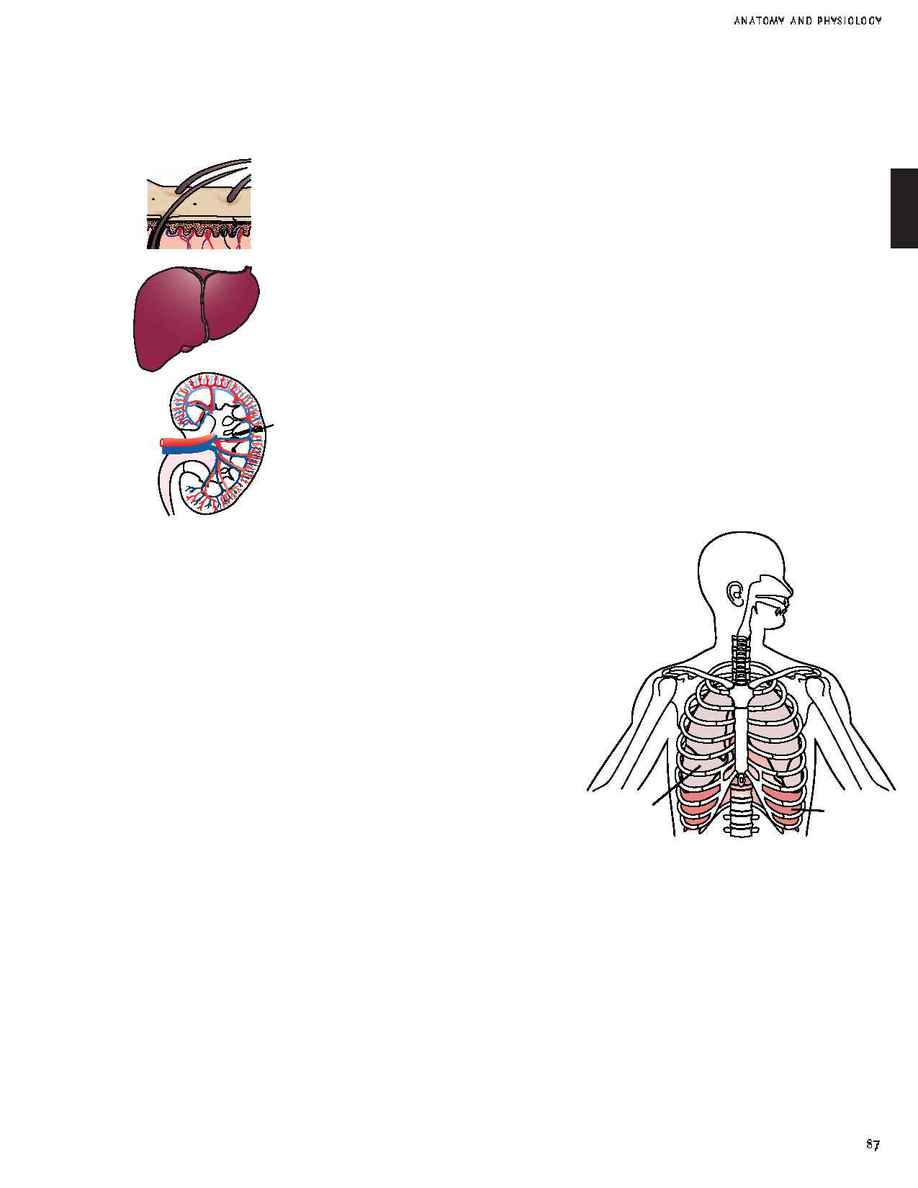
The Excretory System
The excretory system eliminates solid, liquid and gaseous waste products from the body.
Organs of the excretory system include:
·
The skin covers nearly 20 square feet of body surface and is
the body's largest organ. The skin releases water, carbon diox-
ide and other waste through the sweat glands.
·
The liver converts and neutralizes ammonia from the circul-
atory system to urea (u-RE-ah). Urea is then carried, through
the bloodstream, to the kidneys for excretion.
·
The kidneys receive urea from the liver and then pass the urea
through small tubelike structures known as nephrons (NEF-
ronz) (1). Nephrons filter out waste products and water, allow-
ing usable nutrients to be reabsorbed into the blood. Excreted
waste products travel through the ureters (U-re-turz) and
bladder and are eliminated from the body in urine.
The Respiratory System
The primary functions of the respiratory system are:
· The intake of oxygen to be absorbed into the blood
· The exhalation of oxygen's toxic byproduct, carbon
dioxide
Both of these functions take place every time you take a breath.
While it is possible to breathe through both the mouth and the
nose, breathing through the nose is the healthier option. The
nose contains mucus membranes, to filter out dust and dirt, and
warms the inhaled air as it travels through the nasal passages.
Primary respiratory system organs include:
1. The LUNGS are spongy muscles composed of cells into which air enters when you inhale.
These cells process oxygen for absorption into the blood and release carbon dioxide as you
exhale.
2. The DIAPHRAGM is a muscular organ that separates the chest cavity from the abdomen.
The diaphragm expands and contracts automatically, forcing air into and out of the lungs.
87
3
ANATOMY AND PHYSIOLOGY
2
1
1
